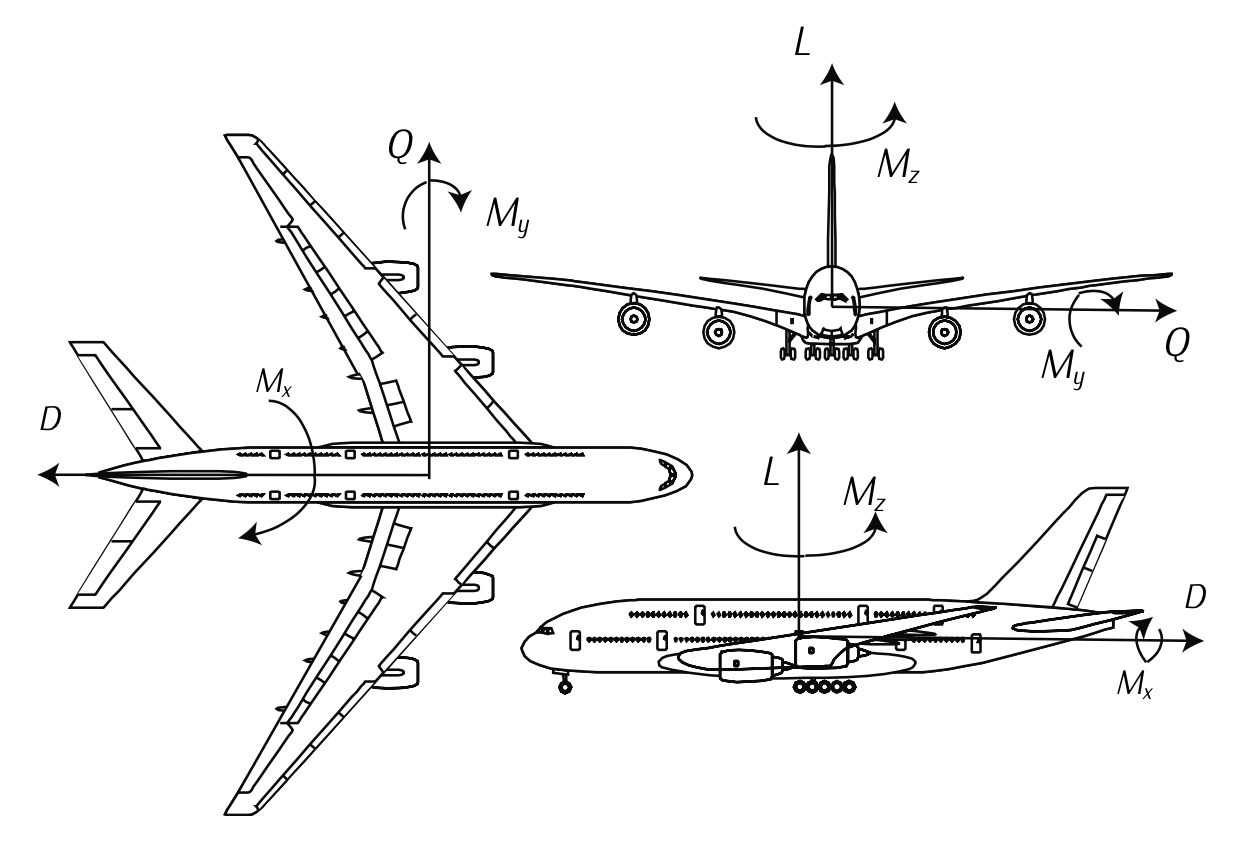3.2: Airfoils shapes
- Page ID
- 77953

Figure 3.9: Aerodynamic forces and moments.
The geometric figure obtained as a cross section of an airplane wing is referred to as airfoil. An airfoil-shaped body moved through a fluid produces an aerodynamic force. The component of this force perpendicular to the direction of motion is called lift. The component parallel to the direction of motion is called drag. In order to be able to calculate the movement of an airplane, an important issue is to determine the forces and torques around the center of gravity produced by the effects of air. Readers are referred to \(F_{\text{RANCHINI}}\) et al. [4]. Other introductory references on airfoil aerodynamics are Franchini and García [3, Chap. 3] and Anderson [1, Chap. 4-5].
| The aerodynamic forces are: | The aerodynamic torques are: |
|
|


